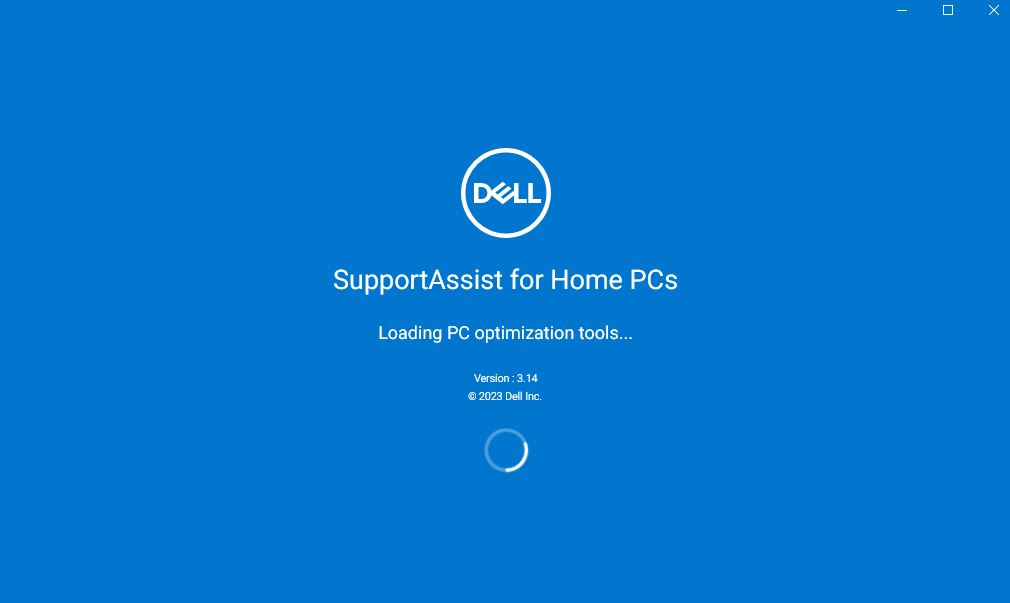Device drivers are software components that enable communication between the operating system and hardware devices. They act as translators, converting high-level commands from the OS into low-level instructions that hardware devices can understand. Each device, such as printers, graphics cards, or network adapters, requires a specific driver to function correctly. These drivers allow the OS to interact with the hardware, allowing applications to utilize device capabilities without needing to understand the intricate details of the underlying hardware architecture. The best driver updater software available in the market can automatically handle all driver updating needs without any hassle. These software tools can scan and update the driver version automatically in the background, saving a lot of time and effort.
1)Support Assist: This is the system software tool which is present for every brand of PC such as ASUS,HP,ACER etc. Support Assistant is the wholesome package of monitoring system requirement and performance. This software automatically detects the required device and system driver for your PC and recommend accordingly. This can be a great tool for device safety and upgrade.
2)AVG Driver Updater: AVG Driver Updater is an automatic driver updater software that can scan and update outdated and malfunctioning drivers on your PC.
Pros
Auto-update for drivers: AVG Driver Updater automatically scans your PC to detect outdated and malfunctioning drivers, then updates them to give you the most current versions and keep your PC performing at its best. Schedule scan: You can schedule scans to run automatically at a convenient time. Great UI: AVG Driver Updater has a user-friendly interface that makes it easy to use.
Cons
Limited free version: The free version of AVG Driver Updater only scans for outdated drivers and does not update them automatically. You need to purchase the full version to update drivers automatically. No backup feature: AVG Driver Updater does not have a backup feature to save the previous version of the driver before updating it. This can be a problem if the new driver causes issues with your system. No bulk update: AVG Driver Updater does not have a bulk update feature, which means you need to update each driver individually.
3)DriversCloud: DriversCloud, formerly known as Ma-Config.com, is an online platform that offers a range of features and tools to analyze, detect, and update drivers on a computer system.
Advantages
Comprehensive System Analysis: DriversCloud provides detailed technical specifications of your computer system, including hardware components, software applications, and drivers. This comprehensive analysis helps users understand their system configuration better.
Driver Detection and Updates: One of the key advantages of DriversCloud is its ability to detect outdated or missing drivers on your system. It scans your computer and provides a list of drivers that need updating. It also offers direct download links to the latest driver versions from manufacturers’ official websites.
Online Detection: DriversCloud offers an online detection tool that analyzes your computer’s hardware configuration without requiring software installation. This is particularly useful for users who don’t have administrative privileges or are working on shared computers.
Driver Backup and Restore: DriversCloud allows users to create backups of their existing drivers before updating them. This feature provides a safety net in case any issues arise after the driver update, as users can easily restore the previous version from the backup.
Hardware Compatibility: DriversCloud provides information about hardware compatibility, including the supported operating systems and versions for each hardware component. This helps users ensure they install drivers that are compatible with their specific system configuration.
Disadvantages
Dependency on Internet Connection: DriversCloud requires an active internet connection for scanning, driver detection, and accessing the latest driver versions. Users with limited or unstable internet access may face difficulties in utilizing the platform’s functionalities.
Limited Driver Database: While DriversCloud maintains a substantial driver database, it may not cover every possible driver for all hardware devices. Some niche or less common devices may not be supported, limiting its effectiveness in updating certain drivers.
Software Limitations: DriversCloud’s capabilities are primarily focused on driver analysis and updates. It may not offer the same level of in-depth system analysis or troubleshooting features as dedicated system diagnostic tools.
User Expertise Required: While DriversCloud provides valuable information and tools, users still need to have some level of technical knowledge to interpret the analysis results and perform driver updates accurately. Novice users may find it challenging to navigate and utilize all the features effectively.
Third-Party Website Downloads: While DriversCloud provides download links to the latest drivers from manufacturers’ websites, users need to be cautious and verify the authenticity and safety of the websites before downloading drivers.
Features of Device Drivers
Initialization and Configuration: Device drivers initialize and configure the hardware device during system startup or when the device is connected to the system.
This involves setting up the device’s registers, configuring its operating modes, and allocating system resources such as memory and interrupts.
Device Detection and Enumeration: Device drivers are responsible for detecting and identifying the connected hardware devices. They use various mechanisms such as polling, interrupt-driven notifications, or plug and play (PnP) protocols to identify the devices and associate them with the appropriate driver.
Interrupt Handling: Many hardware devices generate interrupts to signal events or request attention from the operating system. Device drivers handle these interrupts by registering interrupt service routines (ISRs) that respond to specific interrupt signals, allowing the driver to perform necessary actions or notify the operating system and applications.
Data Transfer and Control: Device drivers facilitate data transfer between the operating system and the hardware device. They provide functions and interfaces for reading data from or writing data to the device’s registers, buffers, or memory. The driver manages data formatting, buffering, synchronization, and error handling to ensure reliable and efficient communication.
Power Management: Device drivers play a role in power management, allowing the operating system to control the power state of the device. They implement features such as device sleep modes, power-saving optimizations, and handling of power-related events like wake-up signals.
Error Handling and Recovery: Device drivers incorporate error detection and handling mechanisms to handle various types of errors that may occur during device operation. They monitor and report device errors, implement error recovery strategies, and provide error codes or messages to the operating system and applications.
User Interface and Application Interaction: Some device drivers offer user interface components or configuration utilities to allow users to customize device settings or access advanced features.They provide application programming interfaces (APIs) or software development kits (SDKs) for application developers to interact with the device and utilize its capabilities.
Compatibility and Compliance: Device drivers need to comply with specific hardware specifications, communication protocols, and industry standards to ensure compatibility with different hardware platforms and operating systems. They follow guidelines and frameworks provided by the operating system for driver development, such as Windows Driver Model (WDM) for Windows-based systems or Universal Serial Bus (USB) specifications for USB devices.



